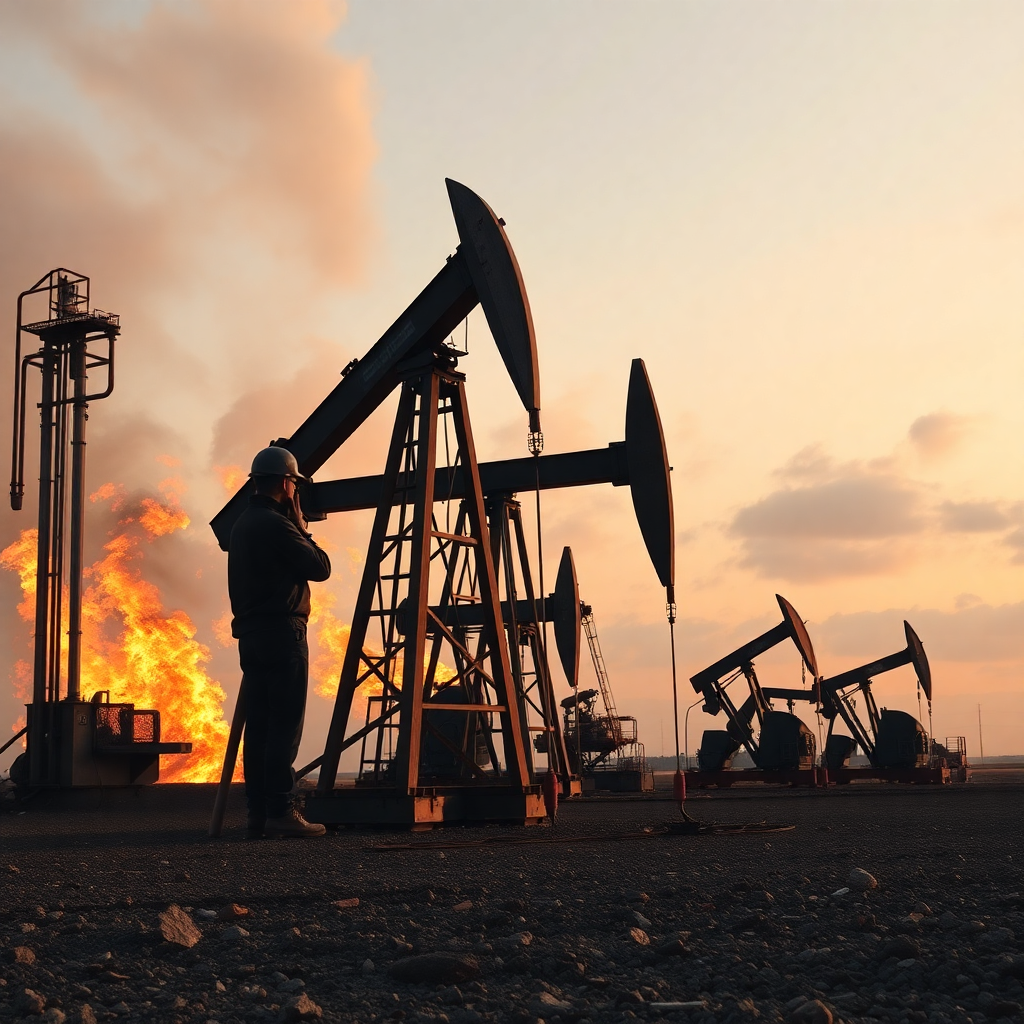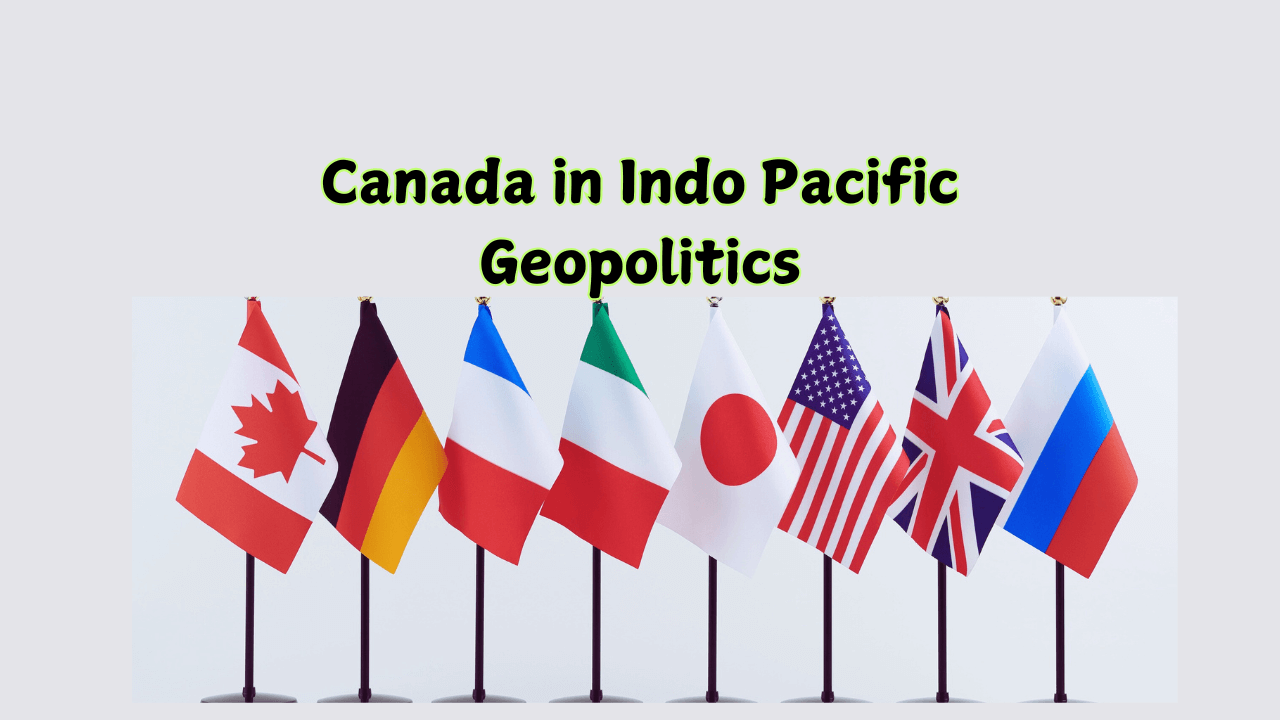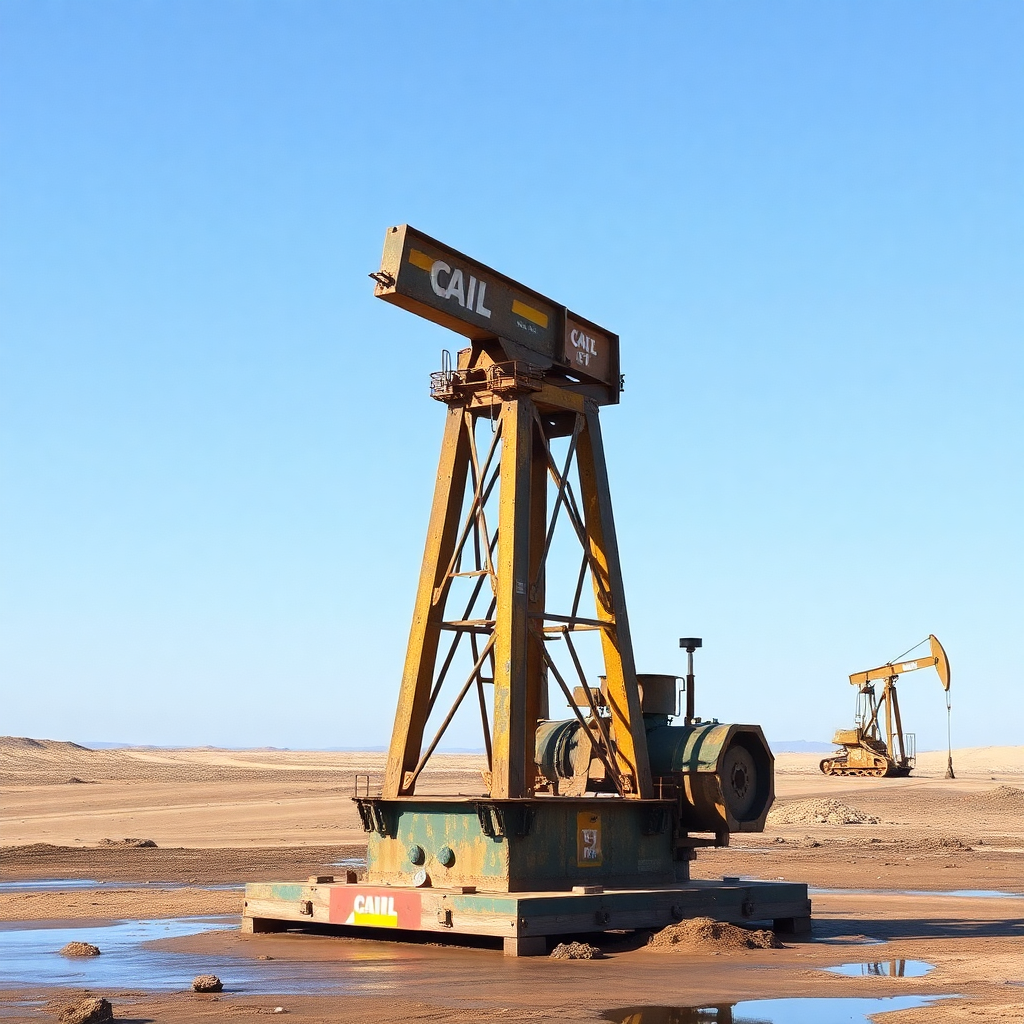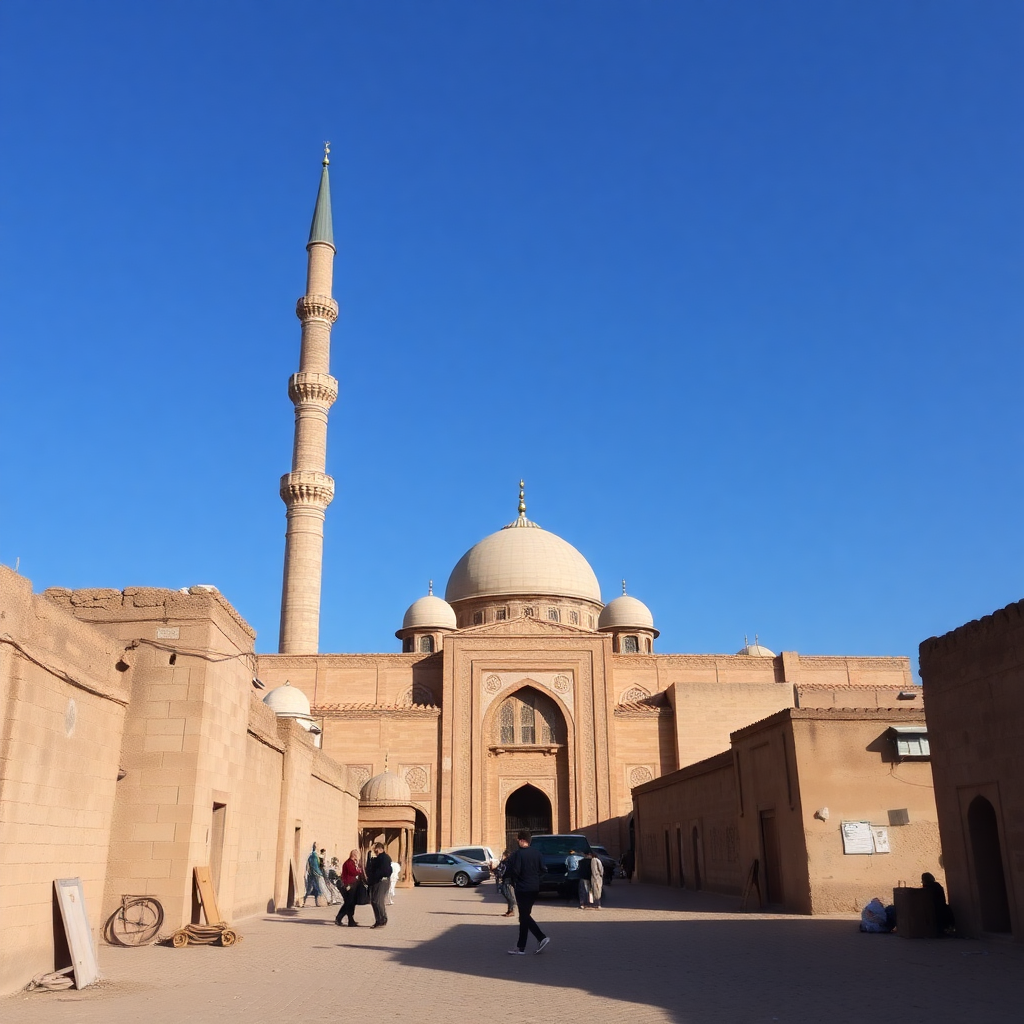Concept of Middle-East
Around 3150 BCE, Egyptian civilization began to rise alongside the political unification of Upper and Lower Egypt under the first pharaoh. Several powerful empires, including the Assyrian Empire (1365-1076 BCE) and the Neo-Assyrian Empire (911-605 BCE), emerged to dominate much of the Middle-East, especially in Mesopotamia. In the 1st century BCE, the expansive Roman Empire took control of the entire Eastern Mediterranean region, which included much of the Middle East. The Eastern Roman Empire, later known as the Byzantine Empire, ruled from the Balkans to the Euphrates.
From the 7th century onward, Islam emerged as a powerful force in the Middle East. Arab rule began to decline with the arrival of the Seljuk Turks in the mid-11th century. The Ottoman Empire captured Constantinople, the capital of Christian Byzantium, in 1453, and established their sultanate.
During and after World War II (1939-1945), several parts of the Middle East saw the departure of British, French, and Soviet powers. The 1947 UN Partition Plan for Palestine led to heightened conflict between Arabs and Jews. Amid the tensions of the Cold War, the Arab-speaking nations of North Africa and West Asia experienced a rise in unity. The withdrawal of European control, the establishment of Israel, and the significance of the oil industry have shaped the modern Middle East.
Oil politics
Oil politics is inextricably linked to geopolitics and geo-economics, as neither can exist in isolation. The Middle-East is the world’s most significant oil-producing region, holding approximately one-third of the globe’s oil reserves. Oil politics refers to the political, economic, and strategic decisions and activities surrounding the extraction, distribution, and use of oil. As a vital natural resource that drives the global economy and military power, oil plays a central role in international relations, conflicts, and negotiations.
Oil politics is a crucial aspect of global politics, economics, and strategic planning. It is central not only to oil-rich nations but also to oil-importing countries’ policies and diplomacy. Challenges like climate change and the shift towards renewable energy are adding new dimensions to oil politics. The Organization of the Petroleum Exporting Countries (OPEC) influences global oil prices by regulating production levels. Oil supplies are often used as a political weapon, as seen during the 1973 Arab oil embargo. Oil-exporting countries depend heavily on oil revenues, and price fluctuations significantly impact their economies.
Oil Surplus and Instability: In 2015, global daily oil demand was 92.80 million barrels, but daily production exceeded demand by 1.7 million barrels. This surplus supply created instability in the global oil economy.
Significant Events in Middle Eastern Oil Politics
- Syrian and Iraqi Wars (2011–present):
The ongoing wars in Syria and Iraq have highlighted the importance of oil. Western nations have long shown interest in Syria’s oil reserves, controlled in part by the so-called Islamic State. The group relies heavily on oil revenues and dominates many oil-rich areas in Syria. - 1973 Oil Crisis:
Following the Arab-Israeli War, Arab countries sharply increased oil prices. This created widespread economic stress globally. - 1990 Iraq-Kuwait War:
Iraq invaded Kuwait in 1990, seizing its oil fields, disrupting global oil supplies, and driving up prices. - 2003 Iraq War:
The U.S. and its allies invaded Iraq, leading to disruptions in Iraq’s oil production and a surge in oil prices.
Current Oil Price Dynamics: Global oil prices remain high due to several factors, including:
- Russia-Ukraine War:
The conflict has disrupted global oil supplies. - Global Economic Recovery:
Rising demand for oil amid global economic recovery has pushed prices higher.
Future Implications: Middle Eastern oil politics will continue to significantly influence global economics and politics. Rising oil prices could put pressure on global economies, and conflicts over oil resources within the Middle East may escalate further.
Impact of oil politics in the Middle-East
When it comes to business and trade in the Middle East, the first thing that comes to mind is oil. However, apart from oil, there are many other businesses in the region. The oil-rich countries such as Saudi Arabia, the United Arab Emirates, and Qatar are now diversifying their economies. The Middle East produces 36% of the world’s crude oil. Additionally, 46% of the world’s oil exports come from the region. The region also contributes 22% of the world’s natural gas and 30% of liquefied natural gas. Considering these statistics, it is believed that these numbers will continue to rise, according to The Economist. The Middle East also has vast reserves of oil and gas, with 52% of the world’s total oil reserves and 43% of natural gas reserves located there. The region’s large youth population has led to the rise of many startups in the area. Thanks to an oil-based economy, some countries in the Middle East have become wealthy or high-income nations, and the demand of their people has shifted accordingly. Saudi Arabia is leading the way in the region’s economic diversification. OPEC (Organization of the Petroleum Exporting Countries) consists of 13 oil-rich countries, and they are located across the Middle East, Africa, and South America. OPEC controls 40% of the world’s total oil production. Essentially, OPEC holds the key to controlling global oil prices. As a result, U.S. Presidents, from Gerald Ford to Donald Trump, have considered OPEC a threat to the U.S. economy and have criticized the organization at various times for raising oil prices.
In recent years, there have been several challenges to OPEC’s expanding influence, including divisions among its members, the rise of the U.S. as a major oil exporter, and the global shift to cleaner energy sources. In this context, the organization has created OPEC+, in collaboration with Russia and other countries. However, the COVID-19 pandemic weakened the efforts of OPEC+. This year, the war in Ukraine has caused global oil prices to rise again, attracting renewed attention to OPEC.
Oil Politics in the Middle-East:
International Politics and Influence
- U.S. Backing of Arab Oil Politics: In March, the global financial sector was hit hard by the Ukraine war, with several banks collapsing and many others losing investments. Many of the major investors in these banks were customers from the wealthy Middle Eastern nations, such as the Saudi National Bank. As a result, oil prices plunged overnight, while the investments from these banks were also lost. In this situation, the shortcut to recovering losses was to cut production and raise oil prices. By raising oil prices again, Middle Eastern oil-rich nations imposed inflation and food crises on the poor populations of the world. Many analysts believe that Washington is pulling the strings behind this decision to recover losses from the banking collapse.
- Foreign Interference: Foreign powers have frequently intervened in the Middle-East to control oil resources. For example, the Gulf War of 1990-91 and the 2003 Iraq War were primarily driven by oil interests.
- Relations with Global Powers: The Middle-East is one of the world’s largest oil suppliers, making it extremely important for international powers. The U.S., China, Russia, and other powers are deeply engaged in the region to secure oil exports.
Economic Impact
- Oil as a Primary Resource: Oil has made the Middle-East one of the wealthiest regions in the world, especially in countries like Saudi Arabia, Kuwait, the UAE, and Qatar. The economies of these countries primarily rely on revenue from oil exports.
- Economic Instability: In the first quarter of 2020, the world went into lockdown, and as a result, most countries economies shrank. The global economy was in recession, but it was gradually recovering. However, analysts have warned of the possibility of another recession. The biggest concern now is inflation. The central banks of developed nations have raised interest rates as the most effective way to combat inflation, but this has hindered demand in the economy. In the current environment, the U.S. Federal Reserve’s rate hikes have brought Wall Street to the brink of a crisis. Deutsche Bank’s economists warned that a major recession was approaching. Bank of America wasn’t as pessimistic but said that there are signs of a recession. Although Goldman Sachs remains somewhat optimistic, it still doesn’t predict a rapid recovery due to the ongoing labor market issues. Meanwhile, the Bank of England has recently raised interest rates by 0.25%, as inflation in the country is at a 30-year high.
Political Impact
- Wars and Conflicts Over Oil: Disputes over oil resources have led to military interventions by competing states, resulting in political instability. During the Gulf War of 1990-91, Iraq took control of Kuwait’s oil-rich regions, which prompted an international military response. Similarly, the 2003 Iraq War was driven by the desire to control Iraq’s important oil fields, leading to long-term political instability.
- Regional Conflicts: Oil resources have caused internal political instability in several Middle Eastern countries. In Iraq, Syria, and Libya, ethnic, religious, and political groups have clashed over control of oil resources. The regions with abundant oil reserves have become battlegrounds for power struggles, further escalating political instability.
- Economic Inequality: The wealth generated by oil revenues has been concentrated in the hands of a small elite, leaving the general population with little benefit. This has led to increasing inequality in many oil-rich countries, further fueling political unrest.
- International Disputes: Oil dependency has led to strong diplomatic ties between the U.S. and Saudi Arabia. Meanwhile, Iran and Saudi Arabia, two major oil producers, are competing to control the oil market and assert political dominance in the region. There have been several oil-related conflicts, including Japan’s invasion of the Dutch East Indies during World War II, Iraq’s invasion of Kuwait, the Iran-Iraq War, and the Chaco War between Bolivia and Paraguay.
Why oil is important for Middle-East?
The history of the discovery of oil in the Persian Gulf region dates back to the period after World War I. Vast oil reserves were discovered in the southern part of Persia (modern-day Iran), which attracted the attention of the Western world. Since then, the region has remained a focal point for the West. Western powers, acting as facilitators, provided all kinds of support, including technology, investment, and expertise, in the processes of oil extraction, refinement, and conversion into petroleum. In return, they ensured easy access to and transport of oil from the Middle-East through various agreements and documents, often keeping the local rulers as puppets under their control.
While Western countries were busy promoting democracy globally, they continued to sustain monarchies and autocracies in the Middle East for their own interests. If the West had not gained access to the oil resources of the region, its industrialization and economic prosperity would not have been possible.
Oil in the Middle East has had a profound impact not only on economic and political aspects but also on international relations and global power dynamics. It has acted as a crucial strategic resource for global powers, being central to numerous wars, diplomatic relations, and international trade. The region’s oil reserves, production, and exports play a key role in shaping its geopolitical structure. However, looking toward the future, the role of Middle Eastern oil may evolve as global energy shifts.
- World Oil Reserves: The Middle East controls 52% of the world’s total oil reserves and 43% of the world’s natural gas reserves. This immense wealth has made the countries of the region powerful players in the global energy market. Some of the countries with the largest oil reserves in the world include Kuwait, Iran, Iraq, the United Arab Emirates (UAE), Saudi Arabia, and Venezuela.
- Economic Development and Oil in the Middle East: Oil exports from Middle Eastern countries generate a large amount of foreign exchange, which directly contributes to their GDP. The economies of countries like Saudi Arabia, Kuwait, and Qatar are dependent on oil. Dubai and Abu Dhabi, which are known worldwide as modern cities today. Oil revenues have played a significant role in developing new cities, airports, ports, and roads. The oil industry has directly and indirectly created employment opportunities for millions of people. Employment has increased for local and international workers. Oil has strengthened the global position of Middle Eastern countries.
- Employment generation in the Middle Eastern oil industry: A large number of workers are employed in the oil extraction, refining, storage, and export sectors. Engineering and technology sectors, technical personnel, administration and management, transportation sector, service sector, supply of materials and equipment, workers from South Asian and East Asian countries (such as India, Bangladesh, Pakistan, Philippines) are engaged in construction, maintenance, and services. The Middle East oil industry has been the mainstay of employment in the region. It has created numerous job opportunities for local and international workers. However, finding alternatives to oil dependence and diversifying the economy is essential for sustainable employment development.
- Middle East Oil and International Geopolitics: The Middle East controls about 50% of the world’s total oil reserves and over 30% of production. Countries such as Saudi Arabia, Iran, Iraq, Kuwait, and the United Arab Emirates are major exporters of oil. Due to the demand for oil, world powers have developed strategic relationships with Middle Eastern countries. The United States maintains a military presence in the Middle East to ensure oil supplies. The 2003 Iraq War was partly fueled by oil. China and India are increasingly dependent on Middle Eastern oil, which has prompted them to develop strategic relationships in the region. Iran and Saudi Arabia are the two major oil producers in the Middle East and are competing for regional influence.
The Strait of Hormuz and the Bab al-Mandeb are crucial for global trade. Maintaining security in these routes is a priority for international powers. Russia cooperates with Middle Eastern countries to influence the oil market. Middle Eastern oil is at the center of international geopolitics. It plays a significant role in the global economy and influences the strategies of the world’s powerful countries. Oil ensures the economic prosperity of the Middle East and its important global geopolitical position. However, excessive dependence on oil may create challenges in the future, especially as the world moves towards renewable energy.
Oil export vs import
Oil Exports in the Middle-East
The Middle East produces 36% of the world’s oil and accounts for 46% of global oil exports. The region also provides 22% of the world’s natural gas and 30% of its liquefied natural gas (LNG). According to The Economist, these figures will only increase. The Middle East holds substantial oil and gas reserves-52% of the world’s total oil reserves and 43% of its natural gas reserves.
The Middle East is one of the largest oil-exporting regions globally and plays a critical role in meeting the world’s energy needs. Renowned for vast oil reserves and production capabilities, the region’s economic discussions often revolve around oil. However, Middle Eastern nations are diversifying their economies beyond oil, with countries like Saudi Arabia, the UAE, and Qatar leading the shift.
Previously, Middle Eastern countries primarily exported oil to the United States and Europe, but the rise of Asian economies has altered this dynamic. In 2022, Saudi Arabia exported the most oil to China, accounting for 27% of its total exports, while 25% went to the U.S. Consequently, geopolitical relations in the region are also shifting. For instance, Saudi Arabia has recently rejected direct requests from the U.S. president while fostering closer ties with China.
Many Middle Eastern nations are reducing their reliance on oil and gas, focusing on economic diversification. This includes developing sectors like tourism, healthcare, education, and technology. The region is undergoing a digital transformation and has become one of the world’s fastest-growing regions in internet and smartphone usage.
The Middle East has seen a significant reduction in political instability compared to earlier years, but geopolitical polarizations around its oil and gas reserves persist. According to the International Monetary Fund (IMF), in 2023, the non-oil economy in the region is expected to grow by 4.2%, while the oil sector’s growth will slow to 1.9%, down from 10.3% in 2022. Foreign direct investment (FDI) in the Middle East accounted for 6% of global FDI in 2022, up from 3% in the previous year.
Oil exports in the Middle-East (2000-2025)
From 2000 to 2025, oil exports from the Middle East have played a pivotal role in the global market. Variations in oil demand, prices, production capacity, and geopolitical scenarios have influenced export trends during this period. Below is an analysis of the decades:
2000-2010 Growth in Oil Exports
The rising energy demand from emerging Asian economies, particularly China and India, drove an increase in oil exports from the Middle East. Saudi Arabia and Iraq solidified their positions as leading oil exporters. Oil prices rose significantly before the 2008 global financial crisis, boosting export revenues. The 2008 crisis reduced global oil demand, prompting Middle Eastern nations to lower production to stabilize prices.
2011-2020 Crisis and Recovery
The Arab Spring of 2011 caused political instability in several Middle Eastern countries. International sanctions reduced Iran’s oil exports, leading it to seek alternative markets like China. Oil prices dropped from over $100 per barrel in 2014 to below $50, impacting export revenues. By 2018, Middle Eastern countries increased production to meet recovering global demand.
2021-2025 Resurgence and Future Outlook:
The COVID-19 pandemic in 2020 significantly reduced global oil demand and export revenues. In 2021, demand began to recover, leading to increased export revenues. The Russia-Ukraine conflict in 2022 drove oil prices higher, significantly boosting the region’s export earnings. As the global shift toward renewable energy and carbon neutrality gains momentum, the demand for Middle Eastern oil is expected to decline gradually.
From 2000 to 2025, the Middle East has maintained a central role in the global economy and energy market. However, the future will require these nations to focus more on diversifying their economies to adapt to the growing emphasis on renewable energy and carbon neutrality.
Imports in the Middle East
Imports of goods in the Middle East: Although the countries of the Middle East earn a large amount of foreign exchange through oil exports, they are dependent on imports of various goods. Imports are an important economic activity in the region to meet the demand for various goods such as food, technology, machinery, vehicles, and consumer goods. Medicines and medical equipment are imported for modern healthcare. These products come from the United States, India, and European countries. There is a dependence on imports for cosmetics, clothing, and home appliances. Luxury cars (such as BMW, Mercedes-Benz), transport vehicles, and aircraft are imported. Heavy equipment for construction, oil and gas production, and other industries is mainly supplied by the United States, Germany, and China. China, Japan, and South Korea are the main suppliers of such equipment. In terms of smartphones, laptops, and other electronic products, China, Japan, and South Korea are the main suppliers. Due to the arid climate and limited agricultural land in the Middle East, food grains (such as wheat, rice), meat, dairy products, and fruits have to be imported from India, Australia, and Europe.
Major Importing Countries in the Middle East: The UAE is the leading importer in the Middle East, with Dubai and Abu Dhabi serving as major trade hubs. Saudi Arabia focuses on importing food, vehicles, and machinery while working to increase domestic production. Qatar’s high-income levels drive demand for luxury goods, along with food and technology imports. Kuwait relies on imports for consumer goods, vehicles, and medical supplies. Iraq, due to political instability, imports essential goods like food and machinery.
The Role of the Middle-East in the Global System
The geographic importance of the Middle East increased significantly after the construction of the Suez Canal in the mid-19th century. It became a key area for international trade routes. Additionally, the discovery of vast oil reserves in several Middle Eastern countries amplified its significance multifold. This led to a significant transformation in the internal dynamics and international relations of the region.
After the Second World War, the then-superpowers turned the Middle East into an open battleground for the Cold War. The West, led by the United States, established NATO, the Marshall Plan, and the Truman Doctrine. In contrast, the Soviet Union formed the Warsaw Pact and COMECON to assert their political, economic, military, and strategic interests in the Middle East. Due to a lack of regional power, leadership vacuums, insufficient trustworthy allies abroad, and the unequal policies of the newly formed UN-centered global system, the nations and citizens of the Middle East became disoriented amidst the Cold War.
However, the unexpected fall of communism and the disintegration of the Soviet Union in the 1980 transformed the Middle East into a region dominated entirely by the capitalist West. Following the collapse of the Ottoman Empire, global powers exploited the Sunni-Shia divide among Afro-Asian Arab Muslims to serve their own interests. Saudi Arabia has consistently played a role in safeguarding Western interests in global politics.
Under the guise of anti-terrorism campaigns, Saudi Arabia has been implicated in various imperialistic aggressions. While there was initial excitement about the kingdom’s new leadership, the murder of journalist Jamal Khashoggi revealed that Saudi Arabia had not deviated from its strategic stance. Iranian media, critical of Saudi Arabia, claim that the country’s significant military spending primarily aims to interfere in the internal affairs of Middle Eastern nations.
Since 2011, Saudi Arabia has instigated conflicts in several countries, destabilizing the region and attempting to overthrow governments through illegal means. The country seeks to establish dominance across the Middle East through militarization, with its military spending increasing by 9.2% compared to the previous year, even as its economic growth slows.
The recent statements of Qatar’s former foreign minister Sheikh Hamad bin Jassim bin Jaber Al Thani highlight the impact of Saudi Arabia’s blockade on Qatar, which has created severe mistrust among the Gulf Cooperation Council (GCC) countries. Rebuilding mutual trust, he suggests, may take years. His comments also indicate that Saudi Arabia’s current leadership aims to involve the country in larger conflicts.
Saudi attacks have turned many parts of Yemen into rubble. Even Saudi Arabia’s recent diplomatic engagement with countries like Russia and China highlights a complex equation. Interestingly, both Russia and China, traditionally considered adversaries of Saudi interests, are avoiding outright hostility towards the kingdom due to the intricate geopolitical scenario.
Opposition groups openly criticize Saudi Arabia’s military coalition, alleging its members of harboring ISIS. They have played a role in the Sunni-Shia divide and maintained an ambiguous position on the Israel-Palestine conflict. Saudi Arabia’s tacit approval of U.S. policies against Palestine and the normalization of Saudi-Israel relations reflect the complexities of Middle Eastern politics.
In such a volatile environment, military involvement with Saudi Arabia could intertwine other nations with the flawed politics of the Arab world. According to various studies, the majority of recruits to ISIS are young Tunisians, who are among the most modern, progressive, and educated in the Arab world. These studies suggest that they seek to implement Islamic ideals in politics, believing that this path could liberate the Arab world from unemployment, unrest, and foreign domination.
In recent decades, the world has faced numerous crises, with the pandemic emerging as one of the most significant. As humanity began to recover from its impact, another explosion occurred in Europe-Russia’s war against Ukraine. This conflict serves as a stark reminder of how fragile, interconnected, and interdependent our world truly is. As the Chinese saying goes, Under the heavens, all is one.
The intensification of major power rivalries and the growing trend of deglobalization are posing serious threats to global peace and security. It feels as though new crises are lurking in every corner-from the Far East, South Asia, the Middle East, and North Africa to Sub-Saharan Africa, Eastern Europe, or Latin America.
The progressive achievements of humanity since World War II now face grave challenges, with the resurgence of populism, nationalism, Islam phobia, and other activist-driven movements undermining the gains made over decades.
The Middle East plays a vital and influential role in the global system, particularly in the realms of energy, geopolitics, and economics. Its strategic geographical location, abundant natural resources, and historical significance have established it as a critical hub. The region holds 52% of the world’s oil reserves and 43% of global natural gas reserves. The region produces 36% of the world’s oil and exports 46% of it. As a result, the Middle East is crucial for global energy supply. Geographically, it lies at the crossroads of Asia, Europe, and Africa. Important maritime routes such as the Suez Canal, the Persian Gulf, and the Strait of Hormuz pass through the region, making it pivotal for international trade. Through its “Vision 2030” initiative, Saudi Arabia is reducing its dependence on oil and investing in technology, tourism, and the entertainment industry. The United Arab Emirates (UAE), with Dubai and Abu Dhabi, has become a hub for international trade and tourism. Qatar is investing in LNG exports as well as in sports and education sectors.
Constructivism theory is connected oil politics of Middle-East
Constructivism and Middle Eastern oil politics are deeply interconnected, as the core idea of constructivism emphasizes that international relations are shaped not only by material resources but also by social constructs, cultural frameworks, and dynamic interactions. Oil in the Middle East is not merely a natural resource but a socially constructed element that defines the region’s identity and its strategic role in global politics. The global dependence on oil has labeled the Middle East as an “oil-rich region,” granting countries like Saudi Arabia and the UAE significant global influence, while shaping their international identities as indispensable energy suppliers. This influence is not limited to economic power but extends to political and ideological structures, as seen in OPEC’s role in consolidating Middle Eastern influence in global energy markets. Moreover, the relationships centered on oil, such as the U.S.–Saudi alliance, illustrate how oil politics underpins global power dynamics. Additionally, regional rivalries, like the Shia-Sunni divide between Iran and Saudi Arabia, are exacerbated by oil wealth, highlighting how energy resources serve not only economic purposes but also ideological and political strategies. Constructivism, therefore, helps explain how oil transcends its material value to become a defining force in shaping the Middle East’s role in the international system.
From the perspective of constructivism theory, Middle Eastern oil politics is not merely an aspect of economic or material resources; rather, it serves as a fundamental element in shaping international politics, state identities, and social structures. According to constructivism, the significance of oil is socially constructed through the ideas, beliefs, and interactions between states. For instance, Saudi Arabia’s identity as an “oil superpower,” established through its leadership in OPEC and its role in meeting global oil demand, is a social construct.
Additionally, Iran has reshaped its geopolitical position by developing the concept of a “resistance economy” in response to international sanctions on oil. Oil politics, especially the relationship between the United States and the Middle East, represents a strategically and socially constructed framework consolidated through military alliances and security agreements.
The oil politics of the Middle East has also played a significant role in shaping the international identities of states. For example, Saudi Arabia and the United Arab Emirates have built their global identities through oil politics, while Qatar has diversified its recognition by investing in LNG exports, sports, and education.
From the perspective of constructivism theory, oil is not merely a natural resource; it is a socially constructed element of international politics, identity, and power structures. Analyzing Middle Eastern oil politics through this lens reveals that oil plays a vital role not only in economic power but also in shaping social, cultural, and political frameworks. The geopolitics of oil is not just a game of economic interests; it reshapes the core structures of international relations and contributes to forming the future balance of power.
[1] Abdullah Manaz “Oil and the Middle East” April 2015, Edition: EBook (2015) Publisher: Google Books









Leave a Reply